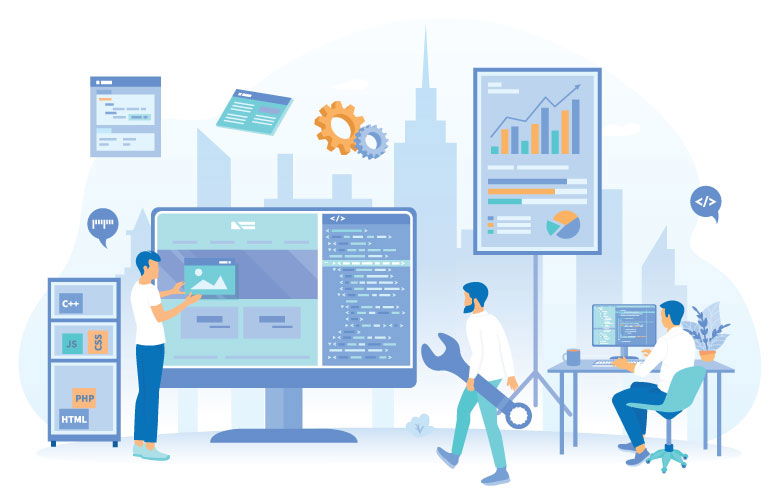Quality assurance (QA) automation has become an indispensable component of the testing process. Automation not only accelerates testing but also enhances the overall quality of software products. However, implementing QA automation can be tricky, and many organizations encounter common obstacles along the way.
QA automation is the process of using programming scripts to automate the execution of manual testing tasks. It can help teams improve the efficiency, accuracy and repeatability of their testing process. Automating quality assurance (QA) can present various challenges. Let’s have a look at some of the most common QA automation challenges and the best ways to overcome them.
Identifying the right automation tool or framework
Based on the budget, the right tools need to be picked to run automated tests. When you’re diving into the world of automation, there are a number of free and paid tools available on the market. Choosing the one that fits your technical and business requirements can be challenging. Depending on the nature and extent of automation you want to incorporate, the tool must offer specific capabilities such as integration with certain frameworks, support for certain programming languages, compatibility with essential third parties etc.
For example, when we start an automation script on a website, we expect to see an “accept/decline cookies” message right away. But sometimes it takes longer or doesn’t show up at all. This is why our test script might fail. To handle this, it is necessary to use Selenium’s built-in waits, like implicit and explicit waits.
While Selenium remains a popular choice for performing QA automation testing. One can also explore new emerging tools like Cypress, Appium and Playwright.
Picking the right tools based on your needs will help you effectively evaluate your software’s performance under real user conditions. To ensure rapid automation testing and optimize QA automation ROI, choose a tool that aligns with QA automation best practices.
- Auto-wait capabilities for easy synchronization
- Access any browser or OS
- Supports the required language
- Allows to record detailed traces of interactions
- Provides easy debugging and monitoring tools
- Access to essential API libraries
- Offers features that ease overall automation processes (For example: Codegen Tool of Playwright)
Employ skilled testers or train existing teams
Testers need programming knowledge and must understand how the automation framework works. A test automation engineer needs the right technical skills and programming knowledge to accurately design and maintain test automation frameworks, test scripts, build solutions and resolve technical issues.
These resources understand both technology and testing tools to meet job requirements. Developers can write code for automation, but understanding testing from a user perspective is important.
However, hiring skilled testers can be challenging and expensive. Look for people who are not only good at current technology but also keep up with what’s coming next. They should have an adequate understanding of how software is built and managed and know what customers expect so they can create the right tests.
Deciding on test automation strategies
Automation tests necessitate the right tool for creating scripts and right testing approach. This can be one of the most challenging tasks to overcome. Hence, QA automation testers must follow a systematic approach while choosing the right tool. You need to have answers to a few critical questions, like:
- What are the capabilities of the testing automation tool?
- How can we reduce the time and effort required to implement and maintain test scripts and test suites?
- How can we design tests that can handle changes to the system and be easily updated without a lot of work?
- How easy is it to make changes to existing test modules?
When beginning automation testing, it’s important to invest time in researching and establishing processes and protocols. However, if executed effectively, you can achieve notable success.
Realistic expectation setting
Automation is a valuable tool that helps you improve speed and accuracy, but it can’t replace human judgment. Set realistic expectations for automation. Some tests can’t be automated (like UAT), while others are easier to perform with automation (like regression tests).
The QA automation experts must review the results of all automation testing. Testing is an ongoing process; it’s never truly finished. Even with comprehensive test scenarios, you may need to skip some features to meet release deadlines. Testing, whether manual or automated, is iterative.
When testing an application on multiple browsers and operating systems, test scripts must be able to run in parallel to minimize testing time. This requires the infrastructure to be capable of handling parallelization.
New modes of collaboration and communication
Test automation needs more planning, foresight, data exchange and collaboration compared to manual testing. This is because automation testing heavily depend on existing test data, tester’s skill with tools and proof-of-concept.
It is essential to have effective communication between teams to get everyone aligned about test automation goals and targets. While working on defining the test automation strategy with developers, project managers and business analysts, it is also important to discuss and narrow down what should and should not be automated. It is not possible to design viable test cases without connecting with the relevant personnel.
It is important to note down everything you find during testing, including results, errors and anomalies. Share this documentation with the team so that the work can be incorporated in the next sprint or test cycle.
Inadequate test reporting
Code coverage is a common way to measure how successful test automation is. It shows how much of the source code is tested when the test suite is run. Continuous integration and evolving requirements can lead to essential tests being overlooked. Connecting test cases to user stories (end-user use cases) will help improve test coverage and track specific metrics for traceability.
Unanticipated code changes can also result in gaps in test coverage. To prevent this, it’s crucial to analyze the source code to identify modified modules and ensure that all changes are thoroughly tested.
For example, managing test data, especially for complex applications, can be challenging, leading to inconsistent test results.
This can be addressed by investing in data management tools and practices. Create a dedicated data repository and ensure data consistency and validity for each test run.
API testing can be complex and is sometimes overlooked by API creators. Testers require a certain level of coding expertise to perform API testing. With the emergence of different tools and technologies, testers can now conduct API testing even without strong coding skills, ensuring thorough testing of these services.
QA Automation solutions: Get the guidance you need
There is no one-size-fits-all solution to QA automation testing. The right tool or framework for your project depends on your specific needs, constraints and resources. Taking a systematic and informed approach to addressing QA automation challenges with the right tools will lay the foundation for a successful automation effort.
By following the QA automation best practices, the challenges can be addressed quicker, which helps in reducing costs and serves as a guide to a reliable testing strategy with an overall increase in quality. At Softweb Solutions, we understand the significance of these practices and are committed to providing top-tier QA automation testing services.



